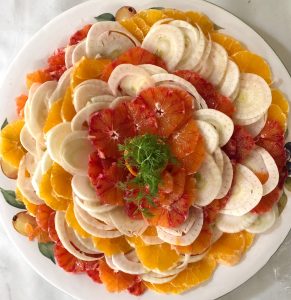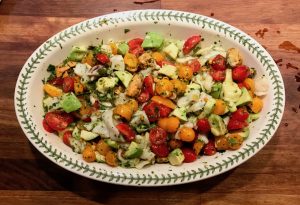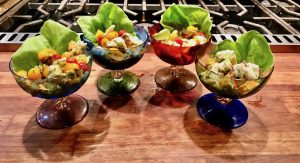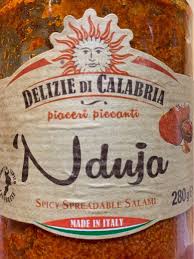This typical Roman dish is phenomenal. If you never ate oxtail, it’s time for you to try it! It is easy to make but takes time –although there is nothing you need to do after the first 20 minutes of work. You can leave the house for 3-4 hours or so if needed while the dish cooks slowly, so for my lifestyle, it’s a perfect dish to prepare in a weekend.
Ingredients
- 600 grams rigatoni or paccheri rigati (you can use any pasta, but these are the types I recommend)
- 3 lbs (1.5 kg, or about 6-8 pieces) of oxtail, each about 2 inches tick
- ½ cup of extra virgin olive oil
- 2 garlic cloves, peeled and smashed
- 1 medium red onion, chopped
- 2 Calabrese or Thai peppers minced
- ½ cup parsley, minced
- 1 cup white wine
- 150 g pancetta or guanciale (both work) and about 100 ml olive oil
- 1 box peeled tomatoes chopped, Pomì (about 750 grams)
- 1 cup freshly grated Pecorino Romano
- Salt
- A good pot; best iron pot, I use a Staub
Preparation
- Sauté the garlic in olive oil over medium-low heat together with pancetta. As soon as the garlic cloves become golden, remove it with a fork or a slotted spoon.
- Add the chopped onion, parsley and hot pepper.
- Turn the heat to medium/low and sauté the onion until it starts to become translucent.
- Bring the heat to medium-high/high, add the pieces of oxtail and brown each side for about 3 minutes.
- Add 1 cup of white wine, mix well, and wait 2 minutes so most of it evaporates.
- Add chopped tomatoes, salt lightly, reduce the heat to low or very low depending on your stove. Cover and cook for 5 hours mixing every hour or so.
- Remove the cover and dry up the liquid, till it becomes thicker, “creamy.”
- In the meantime, cook the pasta, remove very al dente, about 2minutes before you would normally remove from heat. Drain it and pour into the pot with the sauce from which you removed the pieces of oxtail.
- Turn the heat to high, and mix the pasta and the sauce continuously 3 minutes.
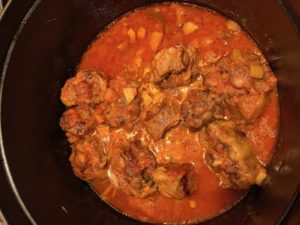
- Remove from the heat, add the freshly grated Pecorino cheese and mix well.
- Put a piece of oxtail in the center of the dish, add pasts on top and enjoy!
Italiano: Oxtail Rigatoni strascicati nella coda alla vaccinara
Tipico piatto di Roma. Meraviglioso, se non lo avete mai provato, fatelo!
Ingredienti (per 4-6 persone)
- 600 g di Rigatoni o paccheri
- 1.5 kg cioè 6-8 pezzi di coda a pezzi alti circa 3 – 4 cm
- 2 spicchi d’aglio
- 1 cipolla media, tritata
- Prezzemolo
- Un bicchiere di vino bianco
- 150 g di pancetta
- 1 pacco di Pomì schiacciati o altri pelati (circa 750 g)
- 120 ml olio d’oliva
- Sale
- Circa 200 grammi Pecorino grattato
- Una buona casseruola meglio se di ferro/ghisa con coperchio (tipo Staub)
Preparazione
- Soffriggere aglio in circa 100 ml di olio d’oliva l’olio, appena prende colore toglierlo e aggiungere la pancetta a dadini di circa 2 x 1 cm, la cipolla tritata, prezzemolo tritato e peperoncino. Abbassare il fuoco
- Appena la cipolla comincia a essere translucida aggiungere i pezzi di coda e fare rosolare a fuoco forte circa 3 minuti per lato.
- Aggiungere 1 bicchiere di vino bianco, fuoco forte, girare circa 2 minuti.
- Aggiungere 1 scatolo di Pomì, salare –poco- coprire e abbassare il fuoco a minimo, circa 5 ore, finché la carne si stacca dall’osso premendo col cucchiaio. Poi alzare un po’ il coperchio per ridurre il liquido all’essenziale per girarci dentro la pasta, cioè deve essere un sugo non un brodo
- Lessate la pasta toglietela molto al dente e ripassatela nel sugo da cui avrete rimosso la coda per circa 3 minuti a fuoco forte.
- Aggiungere Pecorino o Parmigiano, come preferite (io preferisco Pecorino).
- Mettere un pezzo di coda nel centro del piatto versarci sopra la pasta e buon appetito.

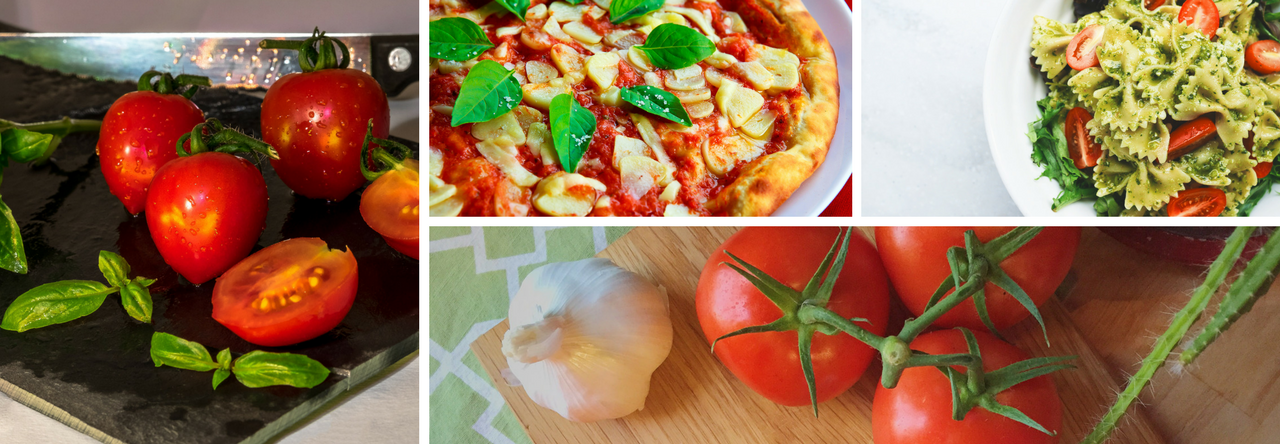
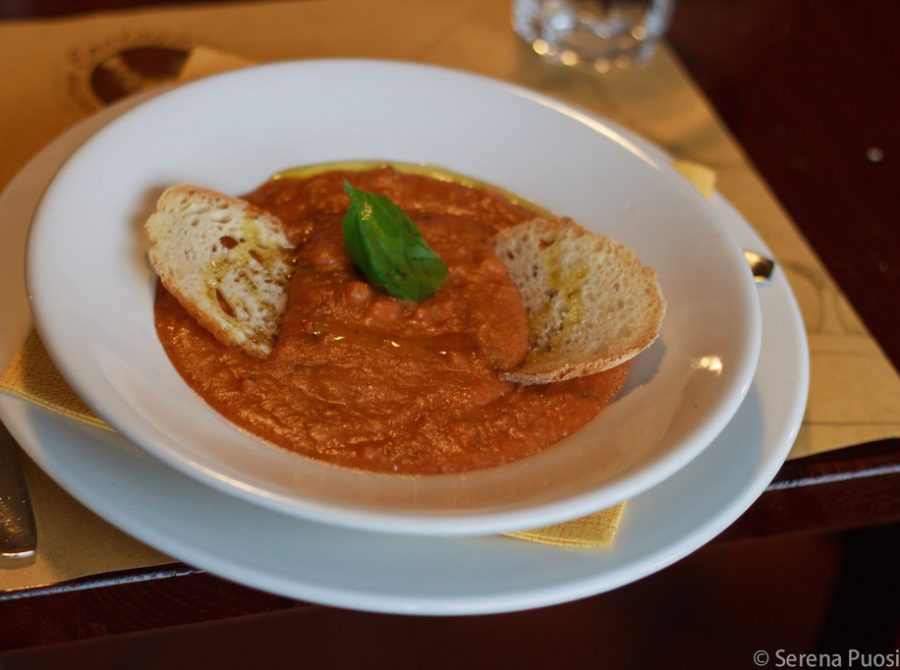
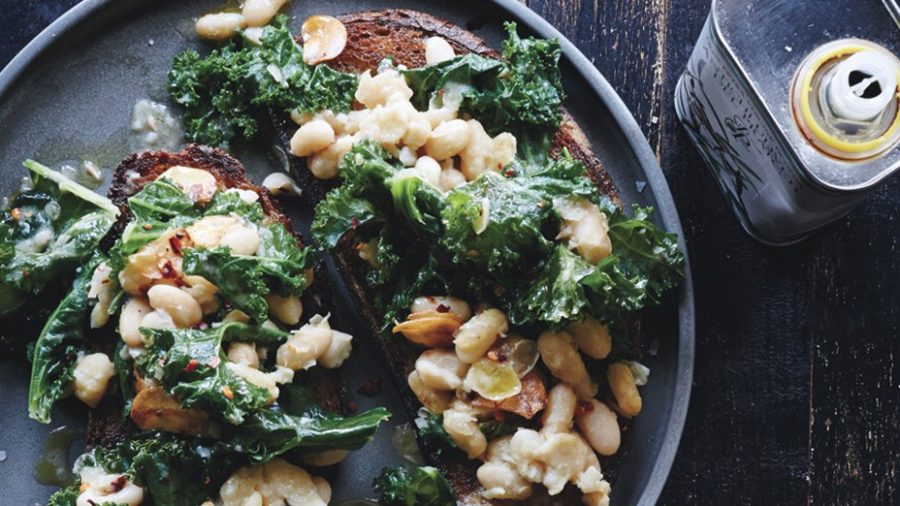
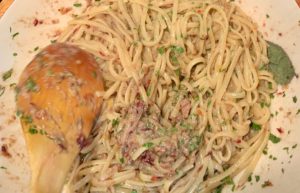 This pasta reminds me of summertime, with its lovely scent of orange and mint. It’s a recipe that can only be made in small portions, so don’t try to increase the measures in this recipe. It’s my friend
This pasta reminds me of summertime, with its lovely scent of orange and mint. It’s a recipe that can only be made in small portions, so don’t try to increase the measures in this recipe. It’s my friend 